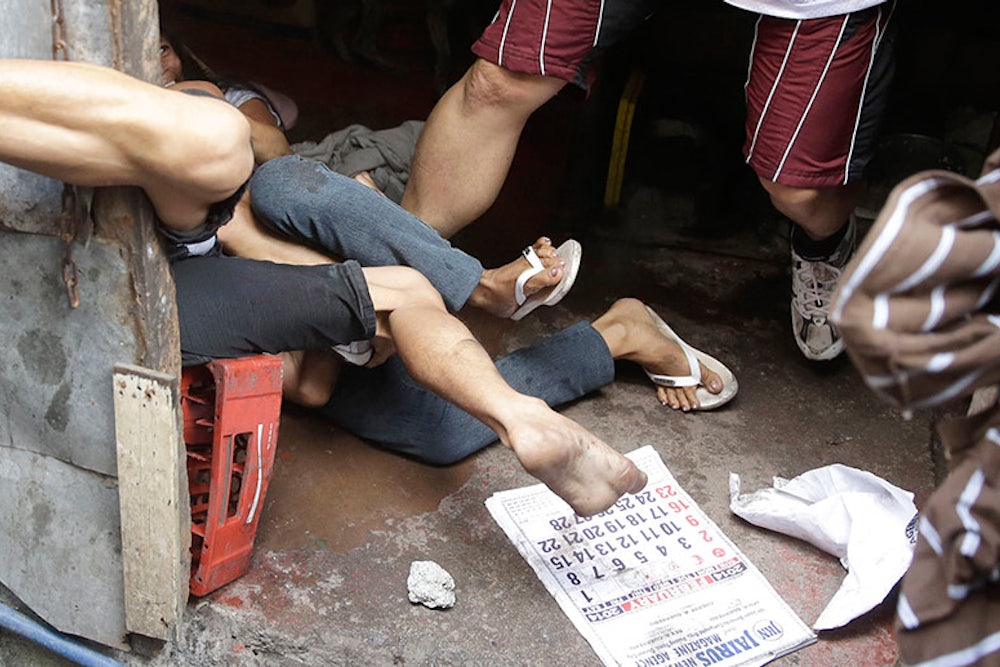Photographer Bullit Marquez has really gone out on a limb with this one! A more violently animated example of still photography is difficult to imagine. Everything is at war (a tug of war) with everything else, which means that everything is connected to everything else as well. Out of this, a crazed and dynamic harmony prevails. The force of the picture is centrifugal and centripetal, simultaneously converging on the flailing knot of limbs at the center and tugging—or being tugged—away from it. Those limbs are all, to differing degrees, disembodied: At first blush, it’s very difficult to tell how many pairs there are, whose leg belongs to whom. The bare leg is not being hauled by a full-bodied individual, only by an arm. The sole face to be seen is that of the person least involved in the action: the girl in profile at the far right of the frame. Her expression, appropriately, can be read in two quite contradictory ways.

One guesses (partly because of the gun) that the picture is of a drug bust in a favela. It’s actually an eviction of slum-dwellers in the Philippines, but ignore that unignorable gun and look at the girl. Presumably she’s crying out in anguish, but if you focus just on her face, she could be enjoying what started out as a neighborhood game of Twister that turned into something that involved trying to strip bare the opposing team. (An approximation of the score is perhaps indicated by the quality of footwear or lack of it: sneakers, a pair of white flip-flops, one flip-flop, and a bare foot.) In this light, she’s gleefully clutching a t-shirt as a trophy. The stripes of that shirt are in bunched opposition to the vertical stripes on the cop’s shorts, one of which serves to make his otherwise scary gun look as if it’s a drooping or dribbling water pistol. The big number five on his jersey, meanwhile, contributes to the hint of a team sport and connects with the numbered calendar page on the floor.
If that calendar occupies a place of surprising prominence, that’s partly because the things you expect to be the center of attention—faces!—have been forced beyond the edges. It’s almost like a spatial version of a photographic negative, or as if the picture has somehow been turned inside out. To that extent, the eviction is already successful in that it has been anticipated by the composition of the photograph. There is perhaps a latent political point implied by this, about the way that the key people involved in the decisions being executed here are nowhere to be seen, are comfortably out of eyeshot.
Oh, and bear in mind the way that photographers accidentally or, in the case of Lee Friedlander, deliberately include their shadows in pictures. In this one it looks like Marquez might have got in on the act, as it were. Could that be his blurred and denimed knee in the middle of the bottom of the frame? Or am I just pulling your leg?
